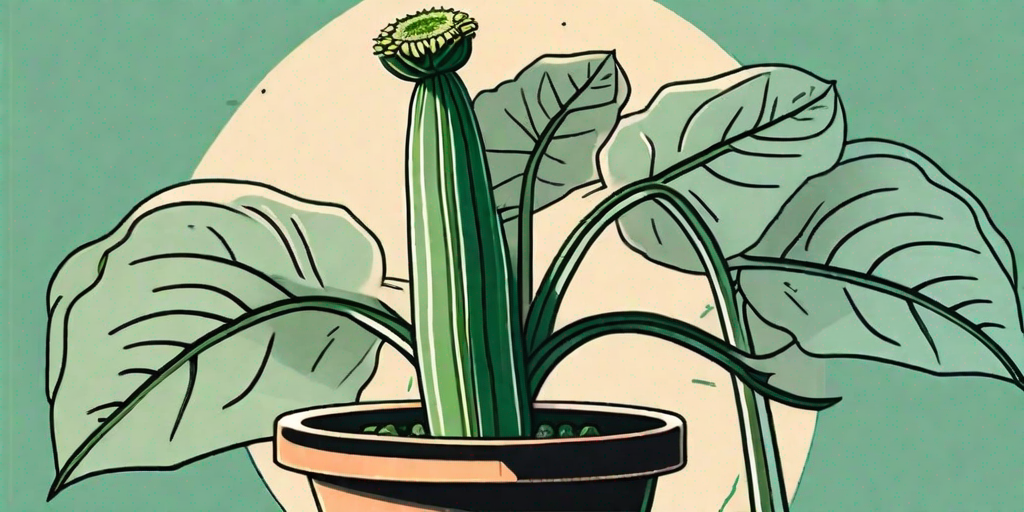
The Starfish Cactus, also known as Stapelia gigantea, is a peculiar and fascinating plant that is sure to add a touch of whimsy to any garden or indoor plant collection. With its star-shaped flowers and cactus-like appearance, it's a real conversation starter. But how do you care for this quirky plant? Buckle up, plant enthusiasts, as we embark on a journey into the world of Starfish Cactus care.
A Brief Introduction to the Starfish Cactus
Native to South Africa, the Starfish Cactus is a succulent, not a cactus, despite its misleading name. It's a member of the Apocynaceae family, which also includes some of your other favorite houseplants like the popular Vinca and Mandevilla. The Starfish Cactus is known for its large, star-shaped flowers that can reach up to 10 inches in diameter. But be warned, these stunning blooms come with a rather pungent aroma, often compared to rotting meat. Yum!
Why the stinky smell, you ask? Well, it's all part of the plant's cunning plan to attract its main pollinators - flies. The scent, along with the dark, reddish-brown color of the flowers, tricks flies into thinking they've found a tasty treat. Instead, they're just helping the Starfish Cactus reproduce. Sneaky, isn't it?
How to Grow a Starfish Cactus
Now that you're acquainted with the Starfish Cactus, let's delve into the nitty-gritty of growing one. Despite its exotic appearance, the Starfish Cactus is surprisingly easy to grow, making it a great choice for beginners and experienced gardeners alike.
Propagation
The easiest way to propagate a Starfish Cactus is by stem cuttings. Simply cut a piece of the stem, allow it to dry for a few days to form a callus, and then plant it in a well-draining soil mix. In a few weeks, you should see new growth. Voila! You've just cloned a Starfish Cactus.
Light and Temperature
Starfish Cacti love bright, indirect light. Too much direct sunlight can scorch their stems, so be sure to provide some shade if you're growing them outdoors. As for temperature, they prefer warm conditions and don't tolerate frost well. If you live in a colder climate, it's best to grow your Starfish Cactus indoors or in a greenhouse.
Water and Fertilizer
Like most succulents, the Starfish Cactus doesn't require a lot of water. In fact, overwatering is one of the quickest ways to kill this plant. Wait until the soil is completely dry before watering again. As for fertilizer, a balanced succulent fertilizer applied during the growing season should do the trick.
Caring for a Starfish Cactus
Now that you've got the basics of growing a Starfish Cactus down, let's talk about ongoing care. With the right conditions, your Starfish Cactus can live for many years and produce numerous stunning (and stinky) blooms.
Pruning
Pruning a Starfish Cactus is easy. Simply remove any dead or dying stems to keep the plant looking its best. This also helps prevent the spread of diseases.
Pests and Diseases
Starfish Cacti can be susceptible to common succulent pests like mealybugs and aphids. If you notice any pests, treat the plant with an insecticidal soap or neem oil. As for diseases, overwatering can lead to root rot, so be sure to let the soil dry out between waterings.
FAQs about Starfish Cactus
- Why does my Starfish Cactus have yellow stems?
Yellow stems are usually a sign of overwatering. Cut back on watering and make sure the plant is in well-draining soil.
- Why isn't my Starfish Cactus blooming?
It could be due to a lack of light or nutrients. Make sure your plant is getting plenty of indirect sunlight and consider using a balanced succulent fertilizer during the growing season.
- Can I grow a Starfish Cactus from a flower?
No, Starfish Cacti are propagated from stem cuttings, not flowers.
Conclusion
With its striking appearance and easy care requirements, the Starfish Cactus is a fantastic addition to any plant collection. Just remember to hold your nose when the flowers bloom!
So, are you ready to add a Starfish Cactus to your plant family? With this guide, you're well-equipped to grow and care for this unique plant. Happy gardening!















